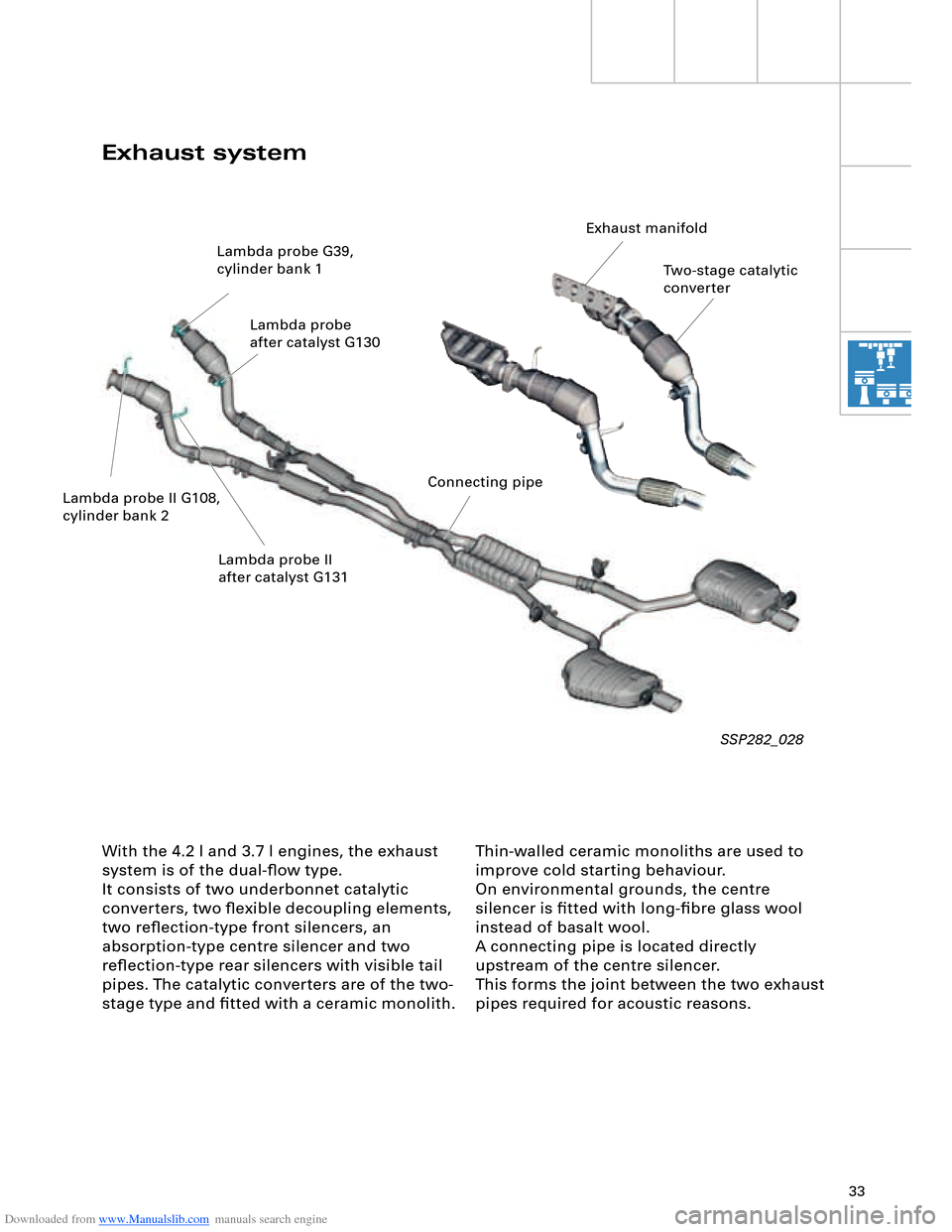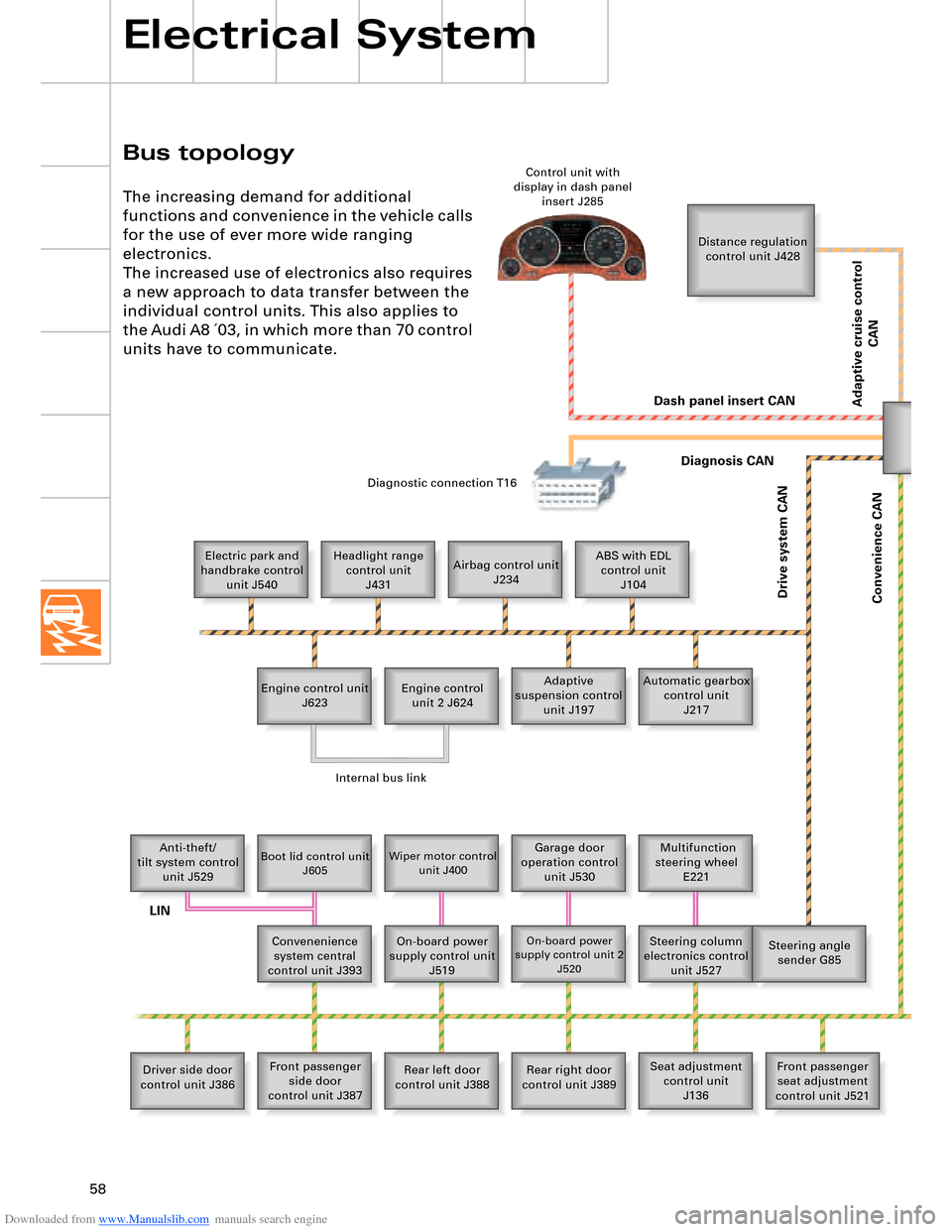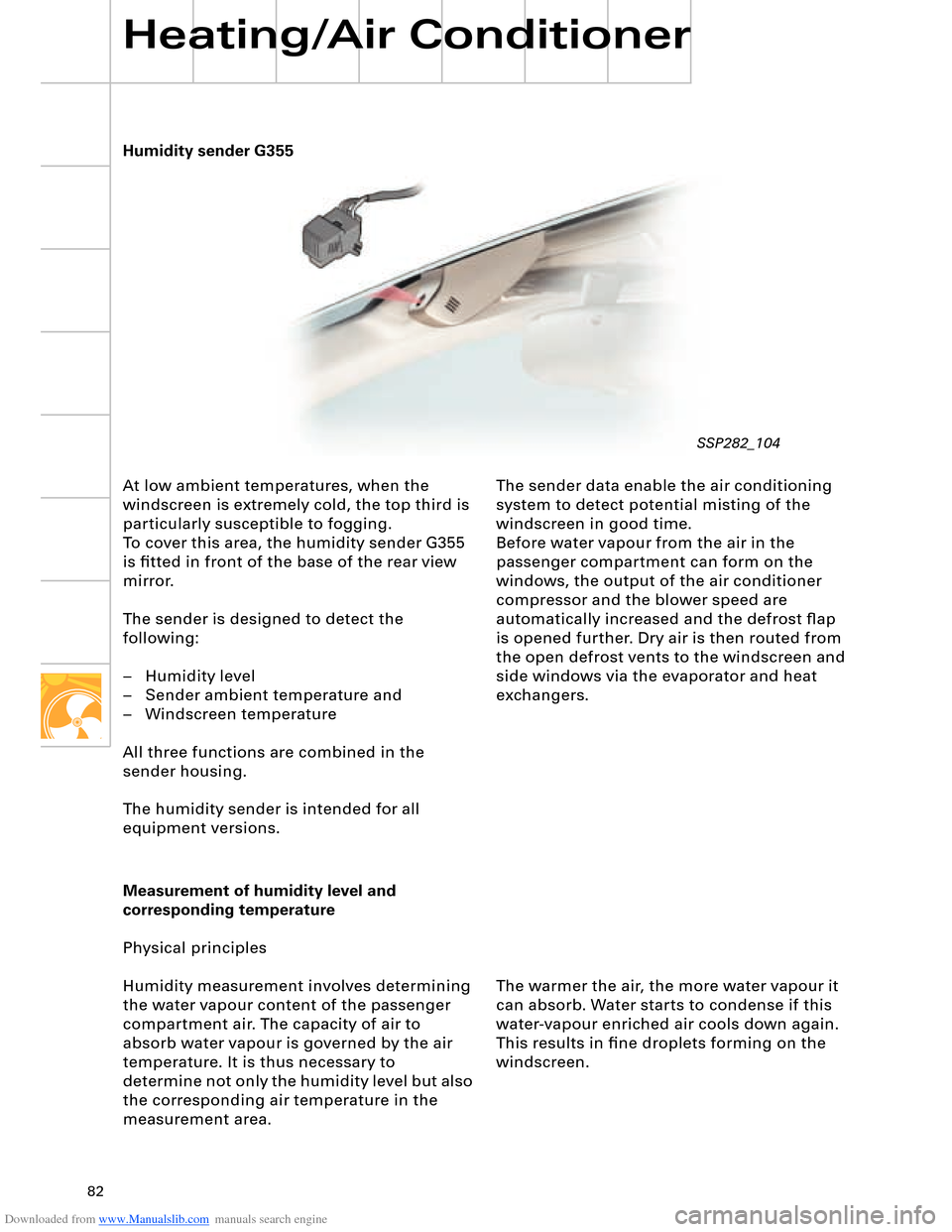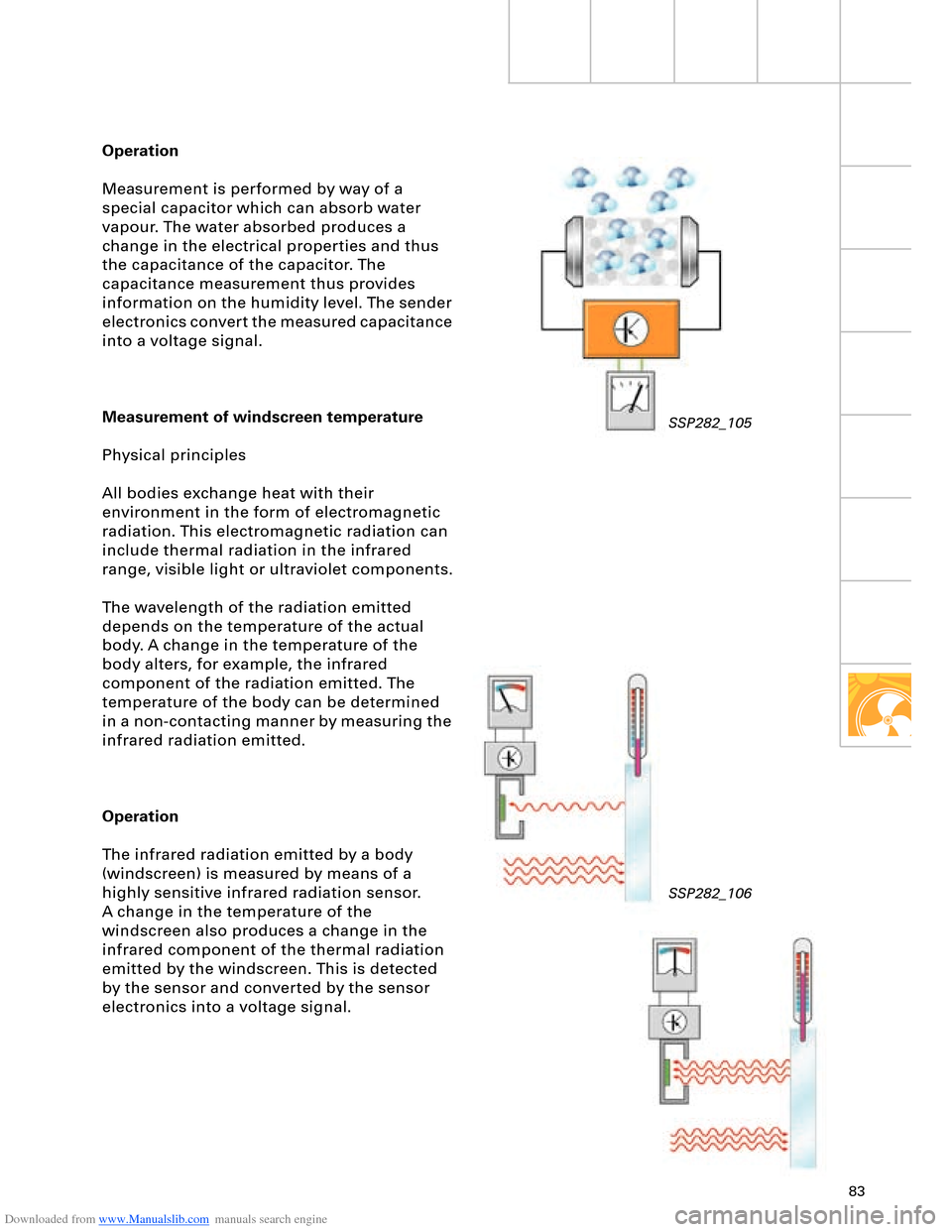ABS AUDI A8 2003 D3 / 2.G Technical Features Manual
[x] Cancel search | Manufacturer: AUDI, Model Year: 2003, Model line: A8, Model: AUDI A8 2003 D3 / 2.GPages: 96, PDF Size: 5.51 MB
Page 33 of 96

Downloaded from www.Manualslib.com manuals search engine 33
Thin-walled ceramic monoliths are used to
improve cold starting behaviour.
On environmental grounds, the centre
silencer is fitted with long-fibre glass wool
instead of basalt wool.
A connecting pipe is located directly
upstream of the centre silencer.
This forms the joint between the two exhaust
pipes required for acoustic reasons.
With the 4.2 l and 3.7 l engines, the exhaust
system is of the dual-flow type.
It consists of two underbonnet catalytic
converters, two flexible decoupling elements,
two reflection-type front silencers, an
absorption-type centre silencer and two
reflection-type rear silencers with visible tail
pipes. The catalytic converters are of the two-
stage type and fitted with a ceramic monolith.
SSP282_028
Exhaust system
Two-stage catalytic
converter
Lambda probe G39,
cylinder bank 1
Lambda probe
after catalyst G130
Lambda probe II G108,
cylinder bank 2 Lambda probe II
after catalyst G131 Exhaust manifold
Connecting pipe
Page 58 of 96

Downloaded from www.Manualslib.com manuals search engine 58
Bus topology
Electrical System
The increasing demand for additional
functions and convenience in the vehicle calls
for the use of ever more wide ranging
electronics.
The increased use of electronics also requires
a new approach to data transfer between the
individual control units. This also applies to
the Audi A8 ´03, in which more than 70 control
units have to communicate.
Distance regulation
control unit J428
Electric park and
handbrake control
unit J540Headlight range
control unit
J431Airbag control unit
J234ABS with EDL
control unit
J104
Engine control unit
J623Adaptive
suspension control
unit J197 Engine control
unit 2 J624Automatic gearbox
control unit
J217
Anti-theft/
tilt system control
unit J529
Boot lid control unit
J605Wiper motor control
unit J400Garage door
operation control
unit J530 Multifunction
steering wheel
E221
Convenenience
system central
control unit J393On-board power
supply control unit
J519
On-board power
supply control unit 2
J520Steering column
electronics control
unit J527Steering angle
sender G85
Driver side door
control unit J386Front passenger
side door
control unit J387Rear left door
control unit J388Rear right door
control unit J389Seat adjustment
control unit
J136Front passenger
seat adjustment
control unit J521 Control unit with
display in dash panel
insert J285
Diagnostic connection T16
Dash panel insert CAN
Drive system CAN
Diagnosis CAN
Convenience CAN
Internal bus link
LIN
Adaptive cruise control
CAN
Page 82 of 96

Downloaded from www.Manualslib.com manuals search engine 82
Humidity sender G355
Heating/Air Conditioner
At low ambient temperatures, when the
windscreen is extremely cold, the top third is
particularly susceptible to fogging.
To cover this area, the humidity sender G355
is fitted in front of the base of the rear view
mirror.
The sender is designed to detect the
following:
– Humidity level
– Sender ambient temperature and
– Windscreen temperature
All three functions are combined in the
sender housing.
The humidity sender is intended for all
equipment versions.The sender data enable the air conditioning
system to detect potential misting of the
windscreen in good time.
Before water vapour from the air in the
passenger compartment can form on the
windows, the output of the air conditioner
compressor and the blower speed are
automatically increased and the defrost flap
is opened further. Dry air is then routed from
the open defrost vents to the windscreen and
side windows via the evaporator and heat
exchangers.
Measurement of humidity level and
corresponding temperature
Physical principles
Humidity measurement involves determining
the water vapour content of the passenger
compartment air. The capacity of air to
absorb water vapour is governed by the air
temperature. It is thus necessary to
determine not only the humidity level but also
the corresponding air temperature in the
measurement area.The warmer the air, the more water vapour it
can absorb. Water starts to condense if this
water-vapour enriched air cools down again.
This results in fine droplets forming on the
windscreen.
SSP282_104
Page 83 of 96

Downloaded from www.Manualslib.com manuals search engine 83
Operation
Measurement is performed by way of a
special capacitor which can absorb water
vapour. The water absorbed produces a
change in the electrical properties and thus
the capacitance of the capacitor. The
capacitance measurement thus provides
information on the humidity level. The sender
electronics convert the measured capacitance
into a voltage signal.
Measurement of windscreen temperature
Physical principles
All bodies exchange heat with their
environment in the form of electromagnetic
radiation. This electromagnetic radiation can
include thermal radiation in the infrared
range, visible light or ultraviolet components.
The wavelength of the radiation emitted
depends on the temperature of the actual
body. A change in the temperature of the
body alters, for example, the infrared
component of the radiation emitted. The
temperature of the body can be determined
in a non-contacting manner by measuring the
infrared radiation emitted.
Operation
The infrared radiation emitted by a body
(windscreen) is measured by means of a
highly sensitive infrared radiation sensor.
A change in the temperature of the
windscreen also produces a change in the
infrared component of the thermal radiation
emitted by the windscreen. This is detected
by the sensor and converted by the sensor
electronics into a voltage signal.
SSP282_105
SSP282_106